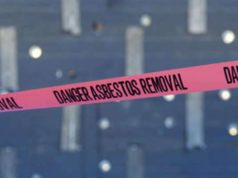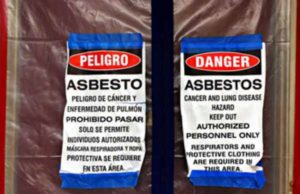 What is Asbestosis?
What is Asbestosis?
1. Asbestosis is a chronic fibrotic medical condition which chronically affects the parenchymal tissues of the respiratory system, specifically the lungs.
2. Asbestosis is caused by the perpetual inhalation and subsequent retention of asbestos filaments or fibers.
3. Typically this disease forms when an individual inhales asbestos in a high intensity fashion. The individual must be exposed to asbestos for a long period of time. Individuals who have worked or work with asbestos are more susceptible to developing Asbestosis. As a result of these characteristics, Asbestosis is regarded as an occupational lung disease.
4. Individuals who work in mining, manufacturing of asbestos-based products, or are in contact with asbestos through the handling or removal of the chemical agent are at great risk of developing Asbestosis.
5. The symptoms of Asbestosis do not manifest or reveal themselves until several decades after the appreciable latency to asbestos. Typically when a sufferer develops the medical condition, they will experience a severe shortness of breath and an increased risk to certain malignancies, such as lung cancer and mesothelioma. The primary symptom attached to Asbestosis is generally a slow onset of dyspnea, which is the medical condition that is aligned with severe breathlessness.
Diagnosis and Treatment of Asbestosis
1. The general diagnostic criteria for Asbestosis are the following: the patient must possess significant evidence of structural pathology which is consistent with Asbestosis. Typically this evidence is documented through a review of imaging-based technologies or histology.
2. The patient must possess significant evidence of causation by asbestos as connected with their occupational and environmental history. The patient must possess a marker of exposure (typically pleural plaques), as well as a recovery of asbestos bodies.
3. After all research and tests have been conducted, the observer must possess no alternatively plausible causes for the findings.
4. The presence of asbestos is typically revealed through imaging-based technologies such as x-rays of the chest.
5. There is no pure curative treatment for Asbestosis. The most common form of relief is given in the form of oxygen therapy to relieve the shortness of breath attributed from Asbestosis.
Legal Issues Associated Asbestosis
1. The first case that revolved around the development of Asbestosis took place in 1924, when an English textile worker died from Pulmonary Asbestosis. These first forms of lawsuits attacked asbestos manufacturers and employers for unjustly exposing their workers to the deadly agent and failing to implement suitable safety measures following the link between asbestos, Asbestosis, and other deadly asbestosis-based diseases such as mesothelioma.
2. As a result of the number of lawsuits filed against manufacturers and employers who worked with asbestos, local courts have pooled together funds to allocate compensation to those inflicted with the disease.
3. If you or a loved one has been inflicted with Asbestosis or a similar medical condition as a result of unjust exposure to asbestos, you must first obtain a formal diagnosis of the disease.
4. To receive a diagnosis, you must take part in a full physical examination and obtain x-ray images of your respiratory system and lungs. If Asbestosis or a similar medical condition is diagnosed, you have legal rights to obtain compensation for the contracting of the deadly condition.
5. Once you have received your diagnosis, you should contact an asbestos lawyer to initiate a personal injury claim. This lawsuit will attempt to collect a financial reimbursement to recoup the finances lost from developing the condition. The lawsuit will investigate the safety measures taken by the employer and align such efforts with the local laws that are placed on asbestos manufacturers.




























